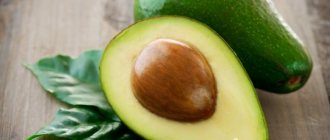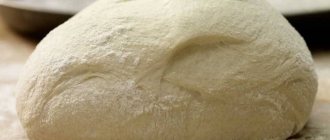Those who have ever dealt with a test know what a labor-intensive process it is. This is why baked goods are most often made in large batches. No matter how tasty the baked goods are, it is rarely possible to eat everything in one go. Therefore, it is worth understanding how and under what conditions to properly store baked goods so that they retain their freshness.
How to store yeast pies
Making homemade pies is a labor-intensive process that requires a lot of time, effort and attention from the housewife.
It is necessary to ensure the correct preparation of the yeast dough, filling, form the pies, and then monitor the baking itself. Therefore, often housewives, if they have already taken up making pies, then bake them in large quantities - so that they not only have enough for the household for several days, but can also be taken with them to work or school as a snack.
And every housewife immediately has a question: how to preserve an impressive pile of cooked pies so that they do not become stale in a few days, do not become moldy and retain their taste. I think our advice on how to store pies will help answer this question.
Useful tips
To avoid premature spoilage of the cheesecake, I advise you to pay attention to the following aspects:
- use only high-quality ingredients to make cheesecake;
- take into account the storage features of both the dessert itself and the separate components included in its composition;
- store the cheesecake in the refrigerator, isolated from other foods;
- Do not freeze cheesecake without invert sugar in it.
As a bonus, I suggest you watch the author’s version of making berry cheesecake. I am sure you will get an incredibly tender and delicious dessert that you will want to repeat!
How to store pies step by step instructions with photos:
Step 1
To work, we will need yeast dough pies, a cutting board, foil, a kitchen towel or clean cloth, a plastic container for freezing, and a food bag.
Step 2
Remove the freshly baked pies from the baking sheet, place on a cutting board and cover with a clean, dry towel. Leave until completely cool.
Step 3
Place the remaining pies after the meal in a food bag and tie it. You can only put completely cooled baked goods into the bag, as if placed in the bag hot, it will become damp and the dough will lose its taste. In this form, the pies will be perfectly preserved until the next meal. If you need to store the pies longer, place the bag of pies in the refrigerator. The pies can be stored in a bag in the refrigerator for up to a week.
Step 4
Step 5
Place the wrapped pies in a plastic freezer container, cover with a lid, and place in the freezer for storage. The pies can be stored in the freezer for up to three months. Before serving, reheat them in the oven directly in foil or in the microwave, removing the foil. Warm up as many pies as you need to serve at a time. Repeatedly heating and cooling the pies worsens their taste.
Who doesn’t love delicious, hearty pies with different fillings? Perhaps today, this is the most traditional dish of the national cuisines of the Slavic people. Pies have always been and will remain a symbol of home comfort and warmth, because it is not for nothing that many people associate them with childhood, when grandmother or mother prepared them. By the way, in the old days, the skill of a housewife was assessed precisely by how she knew how to cook pies. And there is nothing strange in the fact that there are incredibly many recipes for pies in the world. Each housewife has her own family recipe for pies, but not everyone, unfortunately, knows how to properly store pies.
Culinary workshop. How to store homemade baked goods
When homemade baked goods are stored correctly, we can enjoy them much longer. For each type of it - cupcakes, pies, buns, etc. – there are storage rules. In this post, I decided to sort everything out and systematize this information.
So, how to store homemade baked goods.
Cupcakes
If the cake does not contain any additions in the form of fresh fruit or berries, it can be stored at room temperature in a tightly closed container or wrapped in film or a bag. Such baked goods can be easily stored for about a week. It is better to store muffins with berries and fruits in the refrigerator - all in the same container or film, but for a maximum of 3-4 days.
Cookie
Here we choose the storage method depending on the type of cookies. Soft sponge cookies such as madeleines or sliced nuts can be stored in the same way as muffins.
Dry crumbly shortbread cookies are perfectly stored open - without any lids or films - at room temperature. Duration - up to a month. But in order to prevent dust and other foreign objects from getting into it, it is better to cover it with a lid.
Pies
Both sweet and savory pies with fillings (yeast, quiche, sponge, etc.) should be stored in the refrigerator in a container for 3-4 days.
How to defrost cheesecake
There are a huge number of recipes for making cheesecake - based on cream cheese, cottage cheese, with the addition of sour cream or cottage cheese, and so on. But no matter which option you choose for yourself, the rules for defrosting this dessert will be similar.
Thaw cheesecake in the refrigerator!
Some housewives make the mistake of defrosting cheesecake at room temperature. There is too sharp a temperature change, which has a detrimental effect on the dessert itself. Cheesecake really doesn’t like to be rushed, both during the cooking process and during the defrosting process. Therefore, defrosting a cheesecake is impossible in a short time.
It is best to remove the cheesecake from the freezer and refrigerate it at least overnight, but preferably longer. However, it must be isolated from other products. After complete defrosting at a temperature of 2-6 degrees, you can take out the cheesecake and decorate it before serving, or use it as a cake filling. By the way, often a cheesecake that was not prepared as an independent dessert does not require complete defrosting.
This step-by-step method of defrosting the cheesecake will allow it to practically not lose its shape, texture and taste.
How and where to store pies correctly
Regardless of what kind of pies we are talking about, in general they are one thing: fried or baked dough with a filling inside. Unfortunately, such a dish does not remain fresh for long - no more than 2 days. There are few options for where to store pies, especially since it also depends on what dough they are made from.
The most important condition for storing pies after baking is the lack of oxygen access to them.
If the pies are still hot, then just cover them with a clean and dry towel. If they have already cooled down, then cling film will help preserve them as long as possible. So, before storing the pies, it is enough to wrap them in cling film - this will protect the dough from contact with air.
If the pies are already a little stale, you can use this method of “reanimating” them once: cover them with a damp cloth and put them in the oven or microwave.
By the way, contrary to the general belief that an uncut pie lasts longer, it is still worth noting that this is not the case. On the contrary, it is the cut pie that lasts longer.
General rules
There are several general rules, the observance of which will allow you to not only store flour products for as long as possible, but also ensure that they are soft and fluffy:
Regardless of what dough the baked goods are made from, remember: a cut pie will last longer than one that you decide to leave whole. Yes, yes, this is such a “break of the pattern”!
- It is equally important to let the baked goods cool on their own. Cover it with a dry and clean towel. When pies or bread “rest” in this form, their freshness is preserved many times longer.
- Another important rule is no contact with oxygen. To do this, you can use cling film or clean plastic bags. But in this way you should store baked goods that have already cooled on their own.
How to store yeast dough pies
Here are a few secrets on how to properly store pies if they are made from yeast dough:
- immediately after baking, the pies must be placed on a wooden surface and covered with a dry, clean towel;
- The pies should be allowed to cool, this way they will “rest” after baking and will remain fresh longer;
- Do not stack the pies when they are still warm;
- Before storing pies made from yeast dough, they need to be folded with the filling facing each other;
- yeast pies are stored well in plastic containers or bags, if possible, excluding access to oxygen;
- Yeast pies last even longer after baking if you place them in the refrigerator.
How to cover the buns to make them soft?
To make baked goods soft and fragrant, immediately after baking they can be greased with butter. You can melt the butter and brush the buns
with a brush, or you can prick a piece on a fork and run it over the surface
of the buns
.
Interesting materials:
What should be in the first aid kit at an enterprise? What should be on the playground? What is more expensive: rhodium or palladium? What is more expensive: salmon or coho salmon? What is more expensive: salmon or trout? What do you eat on Chuseok? What did the first people eat? What to eat the day after drinking? What is reflux esophagitis? What is Ecoplant?
How to store fried pies
Fried pies are one of the most favorite delicacies of many people. They are often prepared for snacking and are preferably kept fresh for as long as possible. But, unfortunately, not many people know how to store fried pies. So, as for fried pies, immediately after baking you should do the same with them as with yeast ones. But in order for them to last as long as possible, you need to place them in a plastic container and put them in the refrigerator.
There is probably no family that doesn’t love pies. This is a traditional dish of Slavic cuisine, and other nations use similar products. Fresh pies are fragrant, tasty, with various fillings and very filling. However, to preserve their properties, they must be stored correctly, otherwise the taste and appearance quickly deteriorate.
How to store desserts
When storing food products, including confectionery products, they are guided by sanitary and epidemiological rules and regulations (SanPiN).
Desserts and sweets are divided into two types:
- sugary - no flour is used in production (sweets, chocolate, halva, pastille, caramel, marmalade);
- mealy - cakes, pastries, cookies, rolls, gingerbreads.
The shelf life of confectionery products is counted from the moment the product is ready and packaged. This also includes transportation and stay at the place of sale. The packaging contains markings: hour, day, month, year of production, batch number.
The following factors influence the preservation of product quality:
- oxidation when exposed to oxygen - chocolate and its derivatives, bars, cookies;
- drying with insufficient humidity - gingerbread, marshmallows, fondant;
- absorption of moisture in excess - waffles, caramel.
The expiration dates for desserts and sweets are different and look like this:
- For sugary products:
How and how long to store sweets (table). Click on the image to enlarge (opens in a new window)
- For floury products:
How and how long to store desserts (table). Click on the image to enlarge (opens in a new window)
Signs of cheesecake spoilage
Sometimes you may wonder whether the cheesecake is fresh or no longer worth eating. Even if 72 hours have not yet passed, and the dessert looks suspicious, I advise you to pay attention to the following signs:
- smell. If the cheesecake has a sour or rotten smell, then you should never try it.
- delamination. As a rule, the cheese mass tends to separate if the dessert's shelf life has come to an end. Whey or another component of dairy products may be released.
- slime. If you notice mucus on the surface of the cheesecake, this indicates that it is not fresh. You cannot eat such a product.
- dark spots. Just like slime, black or gray spots are mold and indicate spoilage of the cheesecake.
- change in taste. If you try cheesecake and feel a rancid taste, the dessert is not suitable for consumption.
- change in consistency. Usually, if a cheesecake has gone bad, its consistency is similar to porridge - the base, the cheese layer, and the rest of the cake components will all mix into one. Eating this is very dangerous for your health.
Rules for storing yeast dough pies
- While they are still warm, it is not recommended to stack them on top of each other, as they will lose their even appearance and the surface may wrinkle.
- After removing from the oven, they should be allowed to cool and “rest.” The top is covered with a cloth.
- As soon as they are taken out of the oven, they are not placed on a plate, but on a wooden surface, covered with a towel on top.
- If the pies have open filling, then during storage they are turned with this side to each other.
- Food containers and regular bags work well for storage. The main thing is that there is no access to oxygen.
- The refrigerator is the best way to extend the shelf life, but even in this case it is better to wrap the pies in film.
Place the pies in a bag only when they have cooled completely, otherwise moisture will be released as they cool, the products will become damp and lose their original taste.
Storing baked goods with yeast dough
There are several ways to store yeast pies.
- While still hot, the baked goods are placed on a board and then covered with a cotton cloth. Do not stack hot food on top of each other. They will shrink and lose their shape and presentation.
- Pies with open filling should be stored so that these parts are facing each other.
- Another way is to store it in a vacuum container or bag. Lack of contact with oxygen helps to significantly increase the shelf life of baked goods.
- Yeast pies can also be stored successfully in the refrigerator, but each of them should be wrapped in cling film.
The shelf life of yeast pies in the refrigerator is 1 week. And they should be put into a bag only after it has completely cooled, otherwise condensation will begin to form on its walls, which will lead to a loss of product quality.
What to do with fried pies
After removing from the oven, they are treated in the same way as with the type described above, that is, they are laid out on a wooden board or table and covered with a clean cloth. The best place to store it after cooling is in a food-grade plastic container and refrigerator. In this case, they will last as long as possible.
Remember about the filling. With meat filling the shelf life is 1 day, with potatoes – 2 days. With jam filling, the shelf life of pies is 3 days. In the refrigerator the shelf life is slightly longer, up to a week. If desired, the products can be placed in the freezer and reheated at the right time. You can do this with meat and vegetable fillings. Pies with jam can change their taste.
Preparing homemade baked goods from yeast dough is a long, labor-intensive process that takes quite a lot of time and takes a lot of effort. And it’s not always possible to prepare as much baked goods as you can eat at one time. There is always a certain amount of buns, pies and pies left, which over time lose their attractiveness and taste.
We have prepared for you an informative and interesting article on how to preserve the freshness of baked goods.
Simple ways to keep baked goods fresh
No matter what kind of baked goods you make, they need to be properly cared for after they come out of the oven. If you have prepared a pie, pies or bread, then after cooking you need to place them on a wooden tray (a cutting board will do) and cover with a linen towel. Make sure that the towel is not synthetic. So the baked goods should stand until they cool down.
If you bake pies, then after cooking they do not need to be placed on top of each other. All pies should be placed on a large dish and not cover each other. This will help prevent the pies from sticking together, as well as their subsequent deformation.
How to preserve baked goods made from yeast dough for a long time
If you are preparing to store baked goods for a long time, then immediately after they have cooled, put them in containers and put them in a dark place, where they can be stored for about a week. But if you are trying to preserve filled pies, it is better to immediately put them in the refrigerator. But they are stored for no more than five days. Then the filling will gradually deteriorate.
Few people know, but baked goods can be frozen. It can be stored in the freezer for about a month. Then you simply defrost and eat them. After you remove the baked goods from the refrigerator and defrost, you can briefly put them in the oven and let them brown a little.
If you're trying to bring stale bread back to life, a microwave can help. Take the bread and put it in the microwave to warm up for a minute. You won't believe it, but after this the bread will look as if it was just baked. But there is a little trick here. This bread should be eaten immediately after microwave oven. Otherwise, it will simply turn into a cracker, and you will no longer be able to restore it to its proper form.
Can baked goods be stored in the refrigerator?
Storing baked goods in the refrigerator is not only acceptable, but should be done. Initially, the product must be properly packaged in cling film or foil, then placed in the refrigerator, where the temperature is from +2 to +4°C. The shelf life of products in this form is 7 days, if the filling does not quickly deteriorate.
If you want to preserve the product for a longer period, then it can be frozen in the freezer at a temperature of -18°C. To do this, each product must be individually packaged in freezer bags. The shelf life is extended to 1 month. You can defrost them in the oven, this will give them a freshly cooked look.
Source
Shelf life and storage of cheesecake
Let's talk about the shelf life of cheesecake in the refrigerator. This dessert is a perishable product, and, as I mentioned above, cheesecake can be stored for no more than 72 hours at a temperature of 2–6 degrees. If you store the cheesecake longer, there is a risk of poisoning. This is why pastry chefs most often prepare cheesecakes and any other sweets immediately before handing over the order to the client.
I can add that individually, not assembled, the cheesecake components last a little longer, with the exception of the cheese cream. The shortbread base will keep for several months under certain conditions until you add butter to it to assemble the cheesecake. The shelf life of fruit, berry, chocolate or any other fillings for your dessert depends on the ingredients included in their composition.











